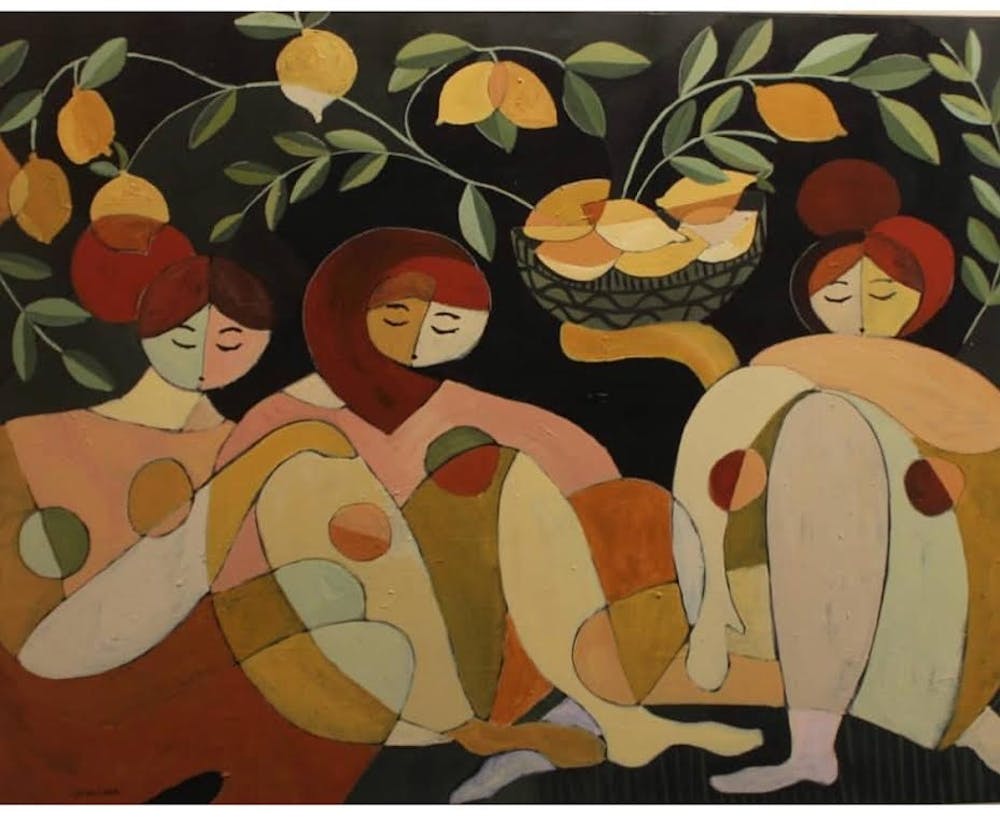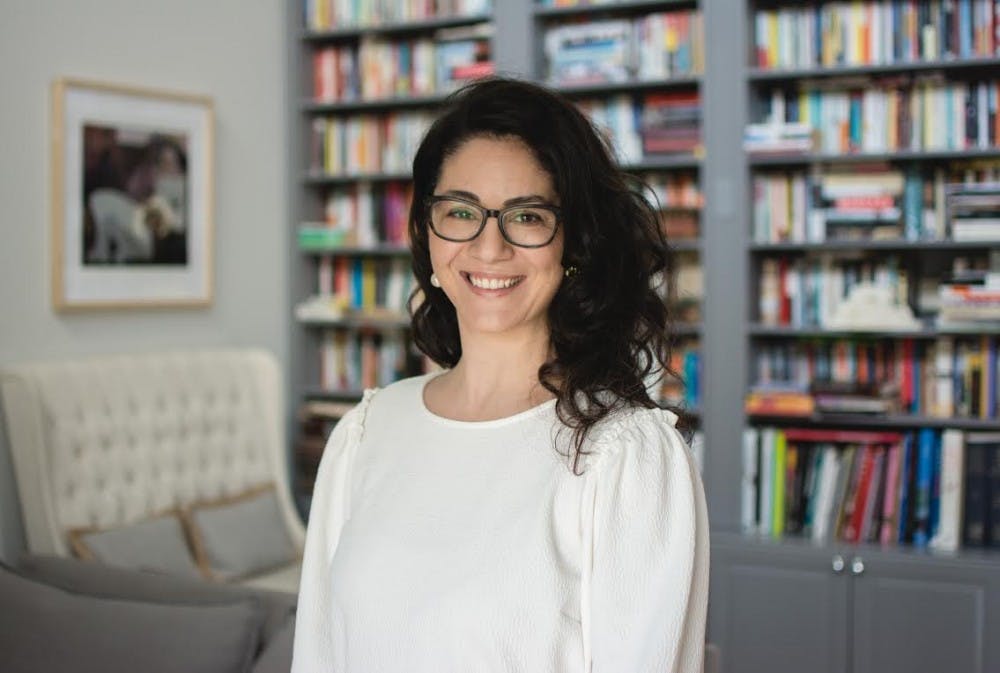While Gizem Saka’s students may know her for her expertise in economics, many would be surprised to learn of the Wharton professor’s impressive past as a national gymnastics champion and exhibition artist.
Saka, senior lecturer in the economics department at Wharton, was born and raised in Istanbul, Turkey. She studied math and economics there as an undergraduate before moving to America in 1999 to attend graduate school at Cornell University, where she later earned her PhD in behavioral economics. After a series of teaching jobs, Saka came to Penn in 2012.
Saka says education “was always very important to me and my family growing up.” Both Saka and her sister have PhDs, as do most women in their family.
In addition, most women in their family have also studied abroad at some point. Saka believes it’s “very good to go abroad just to see how things are done elsewhere.”
“I'm from the Middle East, which is a great place,” she says. “It's very unique, but it's still good to experience something from a different angle.”
Saka became interested in economics through her upbringing in the Middle East. “In Turkey, a lot of people were interested in economics,” she says. “I was growing up in a very high inflation society, so economics was our dinnertime conversation.” Saka adds that this wasn’t specific to her family. “Everyone would talk about the economy all the time. That usually is a symptom of economic systems that don't work.”
Saka says that all of these circumstances pose “interesting questions” that she wanted to explore. She adds, “The more I study, the more I like it because I think it explains a lot about the world.”
Saka usually teaches a combination of micro– and macroeconomics, either at the introductory or intermediate level. This semester, she is teaching Business Economics, Monetary Economics and the Global Economy, and Managerial Economics in the MBA program.
Between micro– and macroeconomics, Saka doesn’t have a preference. “Micro is like solving a puzzle, and I really love micro foundations, but macroeconomics teaches you a lot about the world and about what's actually going on and what the policymakers are possibly going to do.”
Compared to the Wharton students she teaches, Saka says she had a “very relaxed childhood.”
“We didn't have CVs–we didn't even know what that meant,” she says. “We did arts and sports, you know, not to record it someplace but just for the sake of it.”
Saka was particularly passionate about gymnastics. “I was kind of a serious athlete,” Saka says. “Gymnastics is something that you would do starting from a very young age, then you peak at a very young age, and it ends at very young age so it's kind of It's a little bit brutal in that regard.”
“I started just going to an athletics club,” she adds, “and then I became a member of the national team for several years.” Saka was also the national champion in 1989 and 1991. She later quit gymnastics altogether when she was 16 or 17 years old.
Saka has also been doing art from a very young age. “My father was an architect, and he had a wonderful studio and Istanbul,” she says. “My art teacher in my local school was also one of the most prominent Turkish painters of the time.” Saka even studied for the state exam for the Arts Academy.
“I never actually thought twice about whether art should be in your life or not. To me it's inseparable from everyday life,” Saka adds, “You can’t not see Istanbul’s architecture if you're walking in the street—it's not something you can detach yourself from.”
Saka paints every day, and her work has even been featured in prominent exhibits worldwide.
For Saka, transitioning to an exhibiting artist was “an organic development.” Before her first exhibition in Montreal, Saka “had been painting for quite some time.” She continuously does exhibits, and tries to plan some sort of installation either abroad or in the states every year.

Photo courtesy of Gizem Saka
“I paint things that are related to Turkish or Middle Eastern culture. I had one exhibit in which I enlarged Ottoman miniatures onto canvases. Sometimes I paint in very simple form what Istanbul houses looked like in the past, but always referencing what the original sketches looked like in history books.” Saka says.
Saka’s office reflects her Turkish identity. On the window ledge, on top of a black cloth with a small red pattern, sits several varieties of tea bags and mugs. A Keurig tea kettle sits on the on the other side of the ledge. “You can't be Turkish and not love tea or coffee.”
However, Saka’s work typically focuses on the experiences of women. “Most generally my subject matter would be women: women talking and just living.” She adds, “I'm actually working on a series of portraits with women with crazy hair. That's my new thing.”
For Saka, integrating her interests in art and economics felt natural. She teaches a course called “Art Markets” as a visiting lecturer at Harvard University. The class covers a wide variety of topics, like how artwork appreciates over time, or whether different kinds of economies create different art and even the market for art forgery.
“It's much more different than trying to teach someone calculus,” she adds. “When someone wants to take Art Markets as a class, they’re already into the arts; they've already thought about it and it's a great discussion.”
Saka’s interest in art is also reflected in her office. On the far corner of her desk, she has a postcard of Picasso a painting—Paul Drawing—next to two picture frames. One of the frames is Samuel Beckett, a writer that Saka loves, and the other is a photograph of Istanbul, taken by Ara Guler, an Armenian–Turkish photojournalist who recently died.
Saka says, “Istanbul is a truly amazing place. It is full of artists and their beautiful architecture and musicians.” For Saka, Istanbul is a “unique” blend of the East and the West. She adds, “Probably everyone says this for their own city, but Istanbul—it was absolutely beautiful.”

